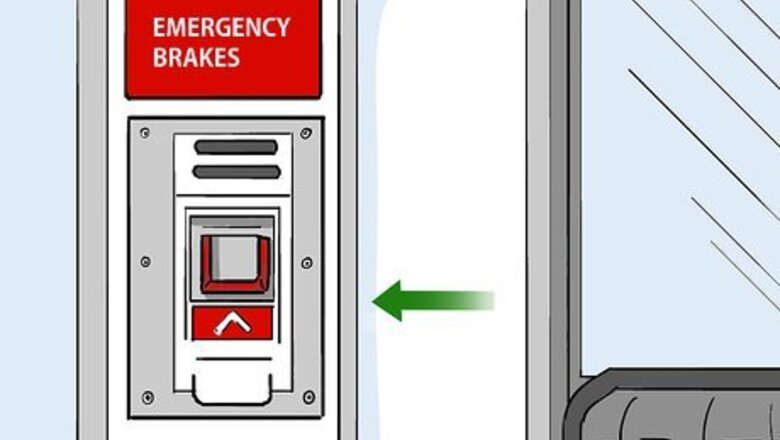
views
Applying the Emergency Brakes
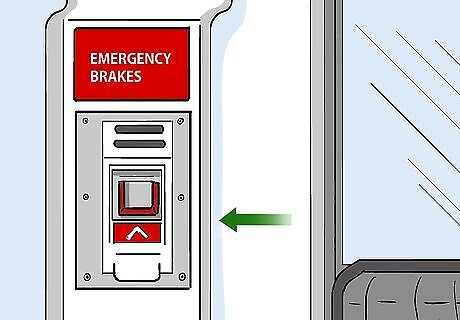
Look for a cover labeled “Emergency Brake” and open it up. Modern trains feature access panels in the passenger cars so passengers can activate the emergency brakes in the event of an emergency. Look for a cover on the wall that’s labeled “Emergency Brake.” Open up the cover to expose the button that activates the brakes. Opening the cover will set off an alarm, so don’t access the panel unless you plan to activate the brakes.

Check for a brake cord with a red handle if there isn’t a button. Some older trains won’t have a covered panel that you can access to apply the brakes, but they will have a pull cord that activates them. Look near the wall for a hanging cord with a red handle to find the emergency brakes.
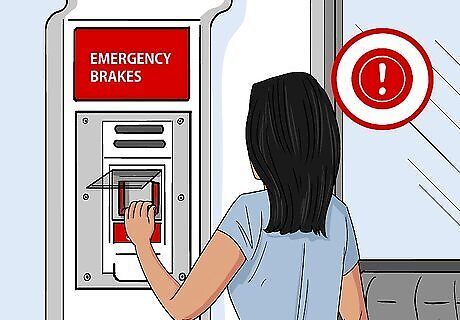
Activate the brakes by pressing the button or pulling the cord. "Only use the emergency brakes on a train if there’s an imminent threat to somebody’s life or limb." If someone is caught in the train’s doors or there’s an obstruction on the tracks, push the brake button or pull the cord to activate the emergency brakes. Remember that activating the brakes for no reason could land you with a hefty fine or even jail time. If the train has a cord and handle, pull it really hard to make sure it activates the brakes.
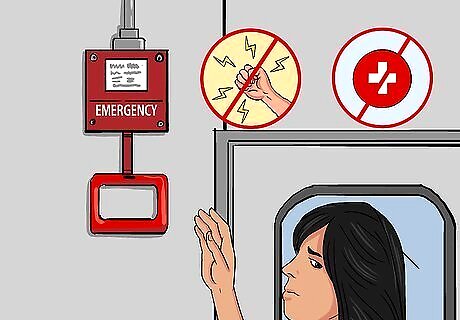
Avoid activating the brakes for crime or medical emergencies. Allow the train to continue traveling to the next station, where emergency responders will be able to address the issue. Hitting the emergency brakes because of a crime or a medical emergency will only make it harder for responders to get to the train to help.
Signaling to a Train to Stop

Call the railroad dispatcher to tell them about any threats to oncoming trains. If there’s a threat to an oncoming train, such as damage to the tracks or an obstruction, call the railroad dispatcher to tell them about it so they can alert the train operators. Look up the number for the local railroad dispatch, or check to see if any of the railroad signs include the phone number. The dispatcher will be able to contact the train’s operator to alert them to the danger so they can hit the emergency brakes.
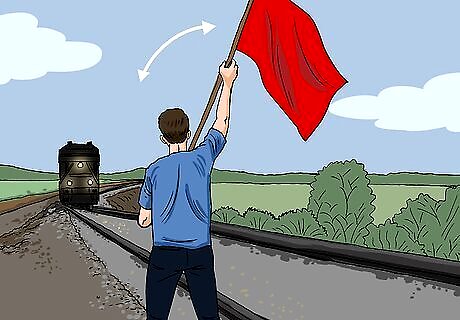
Wave a red flag at the train to signal for it to stop. Waving a red flag at a train is a universal signal for it to stop. If there’s a threat to the train, such as an obstruction or person on the tracks ahead of it, wave a red flag vigorously at it to signal to the operator that they need to apply the emergency brakes. If you don’t have a red flag, try using a red shirt or some red fabric. Try to signal the train to stop as far away from the threat as possible so it has more time to slow down and stop.
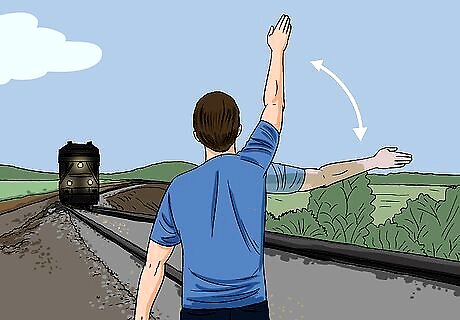
Swing your arm at a right angle to the track if you don’t have a flag. If you don’t have a flag, stand next to the tracks and face the oncoming train. Use your arm closest to the track to swing back and forth at a right angle to the track to signal for the train to stop. Keep your opposite arm still at your side. Use only 1 arm to signal so the message is clear.
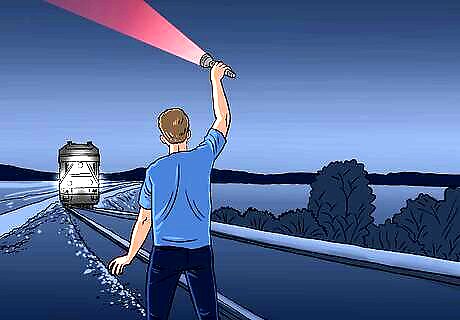
Shine a red light at the train if it’s nighttime. If it’s too dark for the train operator to see your signals, shine a red light back and forth at the oncoming train. If you don’t have a red light, use any other color so the operator can tell you’re trying to convey a message. Wave the light back and forth in rapid motions to get the operator’s attention. You can use a standard light if you don’t have any other options, but be sure to wave it back and forth vigorously so the operator can tell you’re signaling to them.
Press the emergency stop button inside the station or at the railroad crossing. On some systems like BART or some nations like Japan, every station or level crossing has an emergency stop or emergency de-energize button. This will immediately cut all electrical power to the train and signal to the operator to stop. Since there is no electricity, the train's emergency brakes will automatically engage.
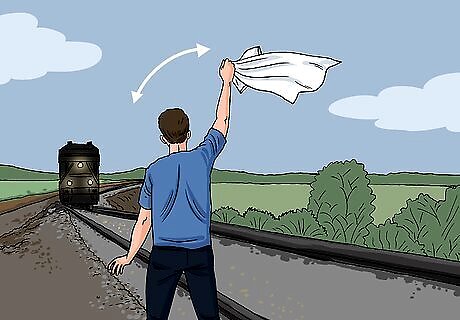
Use any object and wave it violently as a last resort to get the operator’s attention. If you have nothing else, use a shirt, shoe, hat, or anything else you have to send a signal to the train’s operator. Wave it over your head violently and frantically so they can tell you’re trying to signal a threat and that they need to stop the train. Shout, jump up and down, and do anything else you can think of to alert the operator.




















Comments
0 comment